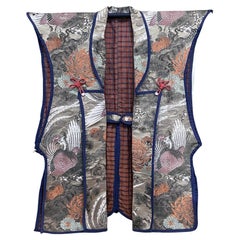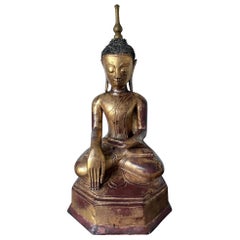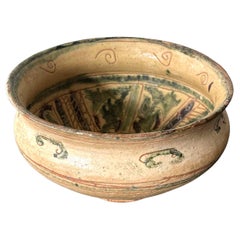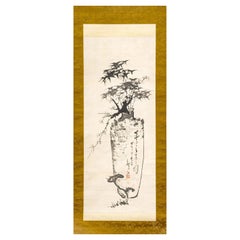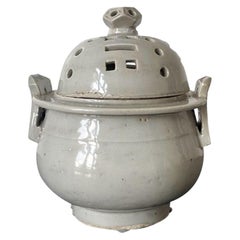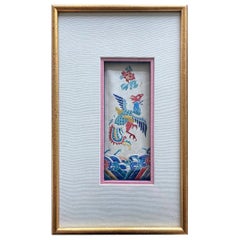Georgia - Asian Art and Furniture
19th Century Japanese Meiji Antique Georgia - Asian Art and Furniture
Silk, Brocade
19th Century Burmese Other Antique Georgia - Asian Art and Furniture
Wood, Lacquer
15th Century and Earlier Persian Islamic Antique Georgia - Asian Art and Furniture
Ceramic
19th Century Japanese Japonisme Antique Georgia - Asian Art and Furniture
Brocade, Wood, Paper
19th Century Korean Archaistic Antique Georgia - Asian Art and Furniture
Ceramic
19th Century Chinese Chinese Export Antique Georgia - Asian Art and Furniture
Silk, Giltwood
1990s Japanese Organic Modern Georgia - Asian Art and Furniture
Bamboo, Rattan
15th Century and Earlier Korean Archaistic Antique Georgia - Asian Art and Furniture
Ceramic
Late 19th Century Japanese Japonisme Antique Georgia - Asian Art and Furniture
Bronze
1970s Japanese Mid-Century Modern Vintage Georgia - Asian Art and Furniture
Glass, Wood, Paper
1950s American Chinoiserie Vintage Georgia - Asian Art and Furniture
Metal
2010s Japanese Organic Modern Georgia - Asian Art and Furniture
Ceramic
16th Century Korean Archaistic Antique Georgia - Asian Art and Furniture
Ceramic
1970s Japanese Mid-Century Modern Vintage Georgia - Asian Art and Furniture
Glass, Wood, Paper
20th Century Japanese Japonisme Georgia - Asian Art and Furniture
Bamboo, Wood
1890s Japanese Japonisme Antique Georgia - Asian Art and Furniture
Ceramic
1950s Japanese Japonisme Vintage Georgia - Asian Art and Furniture
Bronze
19th Century Chinese Chinese Export Antique Georgia - Asian Art and Furniture
Linen, Silk, Giltwood
Early 20th Century Chinese Chinese Export Georgia - Asian Art and Furniture
Silver
19th Century Chinese Qing Antique Georgia - Asian Art and Furniture
Stone
1890s Japanese Japonisme Antique Georgia - Asian Art and Furniture
Silk, Wood
1920s Japanese Japonisme Vintage Georgia - Asian Art and Furniture
Wood, Lacquer
Early 20th Century Japanese Japonisme Georgia - Asian Art and Furniture
Bamboo
1850s Chinese Qing Antique Georgia - Asian Art and Furniture
Ceramic
19th Century Chinese Antique Georgia - Asian Art and Furniture
Silk
19th Century Korean Other Antique Georgia - Asian Art and Furniture
Fabric, Silk, Wood
1890s Japanese Japonisme Antique Georgia - Asian Art and Furniture
Silk, Giltwood
1640s Chinese Antique Georgia - Asian Art and Furniture
Porcelain
Mid-20th Century Chinese Chinese Export Georgia - Asian Art and Furniture
Silk, Wood
Late 19th Century Chinese Chinese Export Antique Georgia - Asian Art and Furniture
Stone
1850s Japanese Japonisme Antique Georgia - Asian Art and Furniture
Wood, Paper
19th Century Chinese Chinese Export Antique Georgia - Asian Art and Furniture
Wood
16th Century Korean Archaistic Antique Georgia - Asian Art and Furniture
Ceramic
1920s Japanese Japonisme Vintage Georgia - Asian Art and Furniture
Bamboo
19th Century Chinese Chinese Export Antique Georgia - Asian Art and Furniture
Silk, Wood
Early 20th Century Korean Folk Art Georgia - Asian Art and Furniture
Textile, Brocade
Early 20th Century Chinese Chinese Export Georgia - Asian Art and Furniture
Cotton, Silk, Plexiglass, Wood
Early 1900s Japanese Japonisme Antique Georgia - Asian Art and Furniture
Ceramic
21st Century and Contemporary Korean Modern Georgia - Asian Art and Furniture
Ceramic
Late 19th Century Japanese Meiji Antique Georgia - Asian Art and Furniture
Silk, Glass, Wood, Lacquer
17th Century Korean Other Antique Georgia - Asian Art and Furniture
Ceramic
1880s Japanese Japonisme Antique Georgia - Asian Art and Furniture
Porcelain
Late 19th Century Japanese Meiji Antique Georgia - Asian Art and Furniture
Silk, Wood
1950s Japanese Japonisme Vintage Georgia - Asian Art and Furniture
Wood, Paper
Early 20th Century Japanese Meiji Georgia - Asian Art and Furniture
Ceramic
19th Century Japanese Japonisme Antique Georgia - Asian Art and Furniture
Ceramic
20th Century Japanese Showa Georgia - Asian Art and Furniture
Bronze, Iron
Early 20th Century Chinese Other Georgia - Asian Art and Furniture
Porcelain, Wood
Late 19th Century Korean Other Antique Georgia - Asian Art and Furniture
Iron
1640s Chinese Antique Georgia - Asian Art and Furniture
Porcelain
1950s Japanese Japonisme Vintage Georgia - Asian Art and Furniture
Bronze
20th Century Chinese Chinese Export Georgia - Asian Art and Furniture
Porcelain
19th Century Korean Antique Georgia - Asian Art and Furniture
Ceramic
16th Century Chinese Antique Georgia - Asian Art and Furniture
Ceramic
19th Century Antique Georgia - Asian Art and Furniture
Bronze
18th Century Korean Archaistic Antique Georgia - Asian Art and Furniture
Ceramic
19th Century Japanese Edo Antique Georgia - Asian Art and Furniture
Ceramic
15th Century and Earlier Persian Islamic Antique Georgia - Asian Art and Furniture
Ceramic
Late 19th Century Chinese Chinese Export Antique Georgia - Asian Art and Furniture
Mother-of-Pearl, Hardwood
19th Century Japanese Japonisme Antique Georgia - Asian Art and Furniture
Silk, Paper
Read More
Symbols of Happiness and Rebirth Adorn This Japanese Satsuma Bowl
Decorated with white cranes and the sought-after thousand-butterflies motif, the Meiji-period vessel offers both a celebration of traditional aesthetics and a clear reflection of the era’s appetite for exquisite export pieces.
Chicago’s Pagoda Red Has a Spirited Mix of Asian Antiques and Bold New Art
For 25 years, gallerist Betsy Nathan has leveraged her keen eye and key connections to bring a unique selection of rare finds to the market.
In L.A., Gallerist JF Chen Has Long Championed Eclectic Blue-Chip Design
Now working alongside his daughter Bianca, dealer Joel Chen has presented a most covetable array of antiques, art and contemporary creations for more than 40 years.
12 Calming Spaces Inspired by Japanese Design
From cherry-blossom-adorned walls paired with glamorous lighting to wood-paneled ceilings above checkerboard-patterned chairs, these 12 spaces seamlessly blend Eastern and Western aesthetics.
Rodrigo Rivero Lake’s Mexico City Showroom Is a Museum-Worthy Trove of Spanish Colonial and Asian Antiques
The dealer and curator has spent the past 50 years amassing a collection of exceptional art, furniture and architectural elements that trace the cultural influence of the Spanish empire from Europe to the Americas and beyond.
16 Refined Asian-Inspired Interiors
These spaces exemplify how Eastern elements elevate a home's decor.
